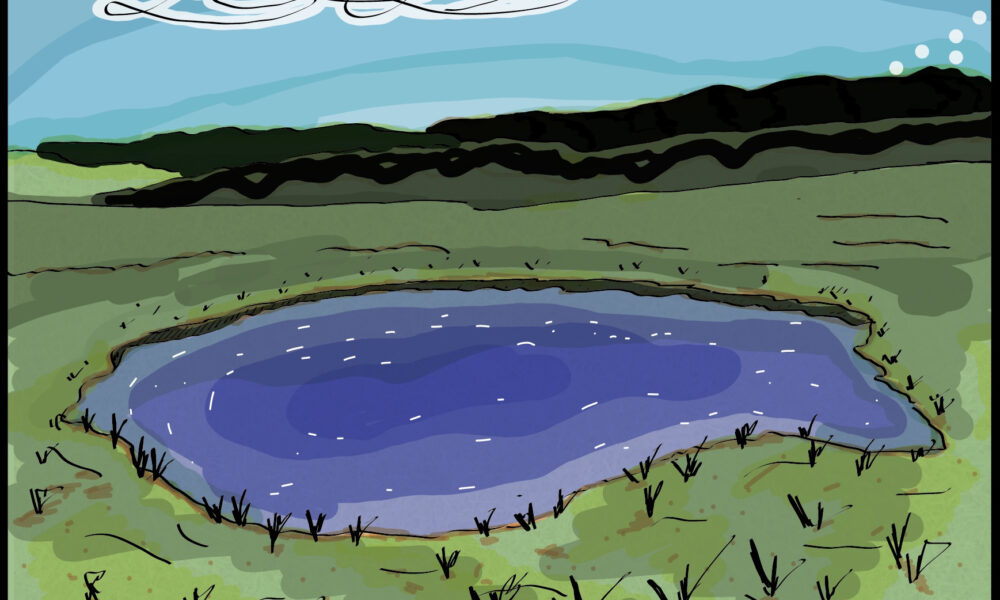Climate change is a concept that we perceive as both intimately close and somewhat distant. We notice its effect through warmer winters and the sweltering heat of summer, but we easily get lost when trying to find tangible actions we can take to slow it down.
Peter Douglas, an assistant professor in McGill’s Department of Earth and Planetary Sciences, and his team recently published a research paper on greenhouse gas emissions from tundra ponds in northern Canada, aiming to understand one of the most important environmental processes for predicting future climate shifts.
The study focuses on small ponds in the arctic that are formed by the thawing of permafrost—a permanently frozen layer under Earth’s surface. These ponds are known for emitting greenhouse gases like carbon dioxide (CO2) and methane (CH4), but the specific sources of these gases remain poorly understood.
The researchers investigated how erosion caused by thawing permafrost, especially at the edges of these ponds, influences greenhouse gas emissions. This cycle of thawing, erosion, and emission may form a positive feedback loop for climate warming, although this has yet to be studied thoroughly.
One of the Quebec research centres for Northern Studies’ (Centre d’études nordiques, CEN) field stations located in Nunavut served as the main source of data for the study. The ice-rich conditions in Nunavut, coupled with ongoing climate change, demonstrates the increased thermokarst activity—the process of ground ice melting and leading to the collapse of solid land. This is consequently followed by a transfer of organic matter such as CO2 and CH4.
While permafrost is technically defined to be soil that remains frozen year-round, climate change is causing it to thaw. The arctic is warming about four times faster than the rest of the Earth, thus any feedback loop in the arctic is accelerated, making it easier to measure and evaluate.
“As the glacier covering the soil melts, the land sinks, thus the change in the natural aquatic environment is inevitable,” Douglas explained in an interview with The Tribune.
The research findings suggest that when the shores of these ponds erode, it introduces more organic matter into the water by feeding microorganisms that produce greenhouse gases. This process also destabilizes the shoreline and contributes to the murkiness of the water. These changes create conditions that increase the emissions of greenhouse gases from these ponds. In the study, ponds with over 40 per cent of soil eroded along their shores showed emission rates four times higher than those with stable shores.
Furthermore, some of the carbon stocks contributing to greenhouse gas emissions are older and come from terrestrial sources. This suggests that as permafrost continues to thaw, older carbon stocks may become increasingly significant contributors to greenhouse gas emissions.
“The continued erosion eases the carbon dioxide that had stayed locked under the ice to get released,” said Douglas.
Using his expertise in isotope geochemistry, Douglas analyzed the isotopic data of production and distribution of CO2 and CH4 from the studied ponds. “Unfortunately the results had a high degree of uncertainties, but the investigation may benefit from validation with larger datasets or additional tracers,” Douglas said.
In Canada, over 40 per cent of land is occupied by permafrost, making this research critical to understand how Canadian land will affect global climate change. According to Douglas, the next step is further investigation on other tundra ponds from different regions to deduce whether a linkage to previous research can be found.
Although only a handful of tundra ponds have been studied thus far, the researchers plan on upscaling the research using mapping technology and satellite data to ultimately draw “the global picture” while integrating both micro- and macro-scale investigation.









